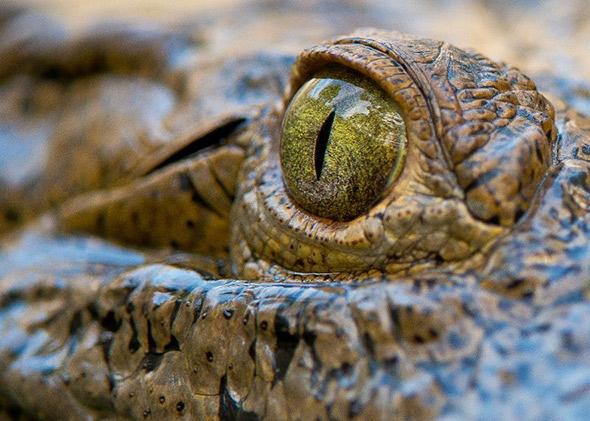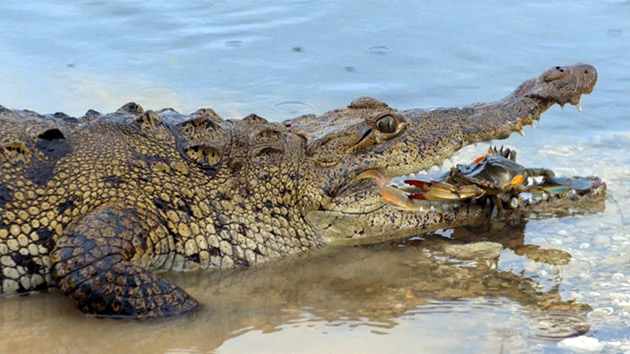2C Media on Getting the Shot, Understanding the Animals, and Making a Great Story Come Together
This Sunday, Nat Geo Wild airs Florida Untamed, the latest installment in its Destination Wild series. Produced by Miami's 2C Media, the special consists of two separate parts: "Gator Country," which looks at young alligators in the Florida wetlands, and "Croc Coast," which considers the challenges facing the crocodile population of the Florida coast. 2C Media spent a year on the project, capturing footage of animals living in the two separate South Florida habitats with an array of cameras — Red Epic, Canon EOS C300, a Vision Research Phantom, a Sony XDCAM-EX2 with the Convergent Design NanoFlash recorder, and even some GoPros — to get the right shots. "This was sort of a first," explains Calvin Simmons, an executive producer on the project at 2C. "We've done a lot of stories that have people and animals in them together. But these are a couple of films that have no humans in them at all, which the exception of some researchers in a segment in the international versions of the 'Croc Coast' film. It's definitely a different style of working."
With shows for Travel Channel, Animal Planet, and more under its belt, 2C Media had solid experience — and the team knew where to go to learn more. "There was a lot of prep work in terms of talking to biologists in the area," he recalls. "Though we have a good working understanding of them, none of us are experts on these animals. But we knew the experts to call and ask."
StudioDaily asked Simmons to offer some advice for wildlife filmmakers, based on his own experience sending crews into gator country.
Watch an ill-fated turtle attempt to escape a gator's toothy maw in this clip from "Gator Country."
Know what you're getting into.
Working with gators can be a scary thing. My favorite imagery in both of the films is this underwater Red photography of a gator swimming through Crystal Springs in Central Florida, and the sun is beaming through the top of the river with light refracting everywhere. It's so gorgeous. [You can see a still from this shot at the National Geographic web page for "Gator Country" -Ed.] But that was the product of a really experienced wildlife DP with a wrangler behind him with a special tool just in case that gator took a turn. Our team knows that, generally, a gator is afraid of humans, especially standing up, but if there's a gator in mating season, or who's hungry or sick there's no guarantee. There is a certain comfort level, where you know the probability of having an incident, but getting some of these shots was daring on the part of the DPs. If you set out on this journey, you need a lot of reptile and animal experts. Think it through. Be really comfortable about the risks that play into it and the shots you want to get. We got unprecedented photography without incident.
Match the camera with the material for the best shots.
In the swamp film, "Gator Country," one of the stories is the waterdance that American alligators do as part of a mating ritual. It starts with this bellowing. The males are bellowing as a show for the females and, as a result, they create these sound vibrations that are below the capability of the human ear to hear. They're underwater and, as a result, the water dances off the ridges, the scutes, on their backs. If you talk to biologists, you know when it's very likely to happen. A larger crew might shoot that for us with multiple cameras. You get in position and look at the time of day — and, with an iPhone, you can track the sun's movement pretty well to put yourself in the correct position so that it's perfectly backlit. And then whatever happens, happens. You adjust in the moment because the animals don't stick to the script. But that's a tremendous sequence with both Red and Phantom footage. It's insane photography — beautiful, beautiful stuff.

Be willing to rewrite the script.
Sometimes something happens that's not what you're expecting. We have a sequence between an eastern diamondback rattlesnake and a kingsnake that was unexpected. We were tracking a diamondback that was one of the characters in our "Croc Coast" film, and then this encounter happened. It took us back to the drawing board. We decided the kingsnake had to become a character in our film because that was such an intense sequence. I knew a little bit about kingsnakes from work we had done in the past, but now we asked the experts: "Tell us more. Where are we going to find them? What's their behavior? What do they eat?" We had to work with what the mangrove swamps gave us, and we went in a new direction. Luckily, it turned out to be a hit for us.
If you can't get the shot you want, make the best of the situation.
Waiting is a big part of it, but you also have to deal with a certain degree of failure. You don't always get the shot. You put a goal list together of what you hope to get that day, but it doesn't always come through. So you have to ask, 'Do we try this somewhere else, or do we have to abandon it?' We only have a certain number of days and we have to stay pretty close to that schedule. But while you're out there, you can still look for flavor and texture. There is a shot in "Gator Country" of a gator with a large grasshopper sitting right in the center of his crown as the gator swims across a body of water. It's not the most beautiful shot, compared to some of the birds or underwater footage we got. But it is the most random thing. You think, "Man, that's got to be driving that gator nuts. If only he could get to it, the grasshopper would be in big trouble." But there they are, co-existing, and somehow this grasshopper caught a lift from the most dangerous, top predator in the swamp that day. That was a wonderful shot, even though we didn't get the gator behavior we were looking for. I don't know who it was that pointed that shot out. It was probably the cinematographer, but it could have been the P.A. We believe in collaboration and everyone pointing out stuff like that on a shoot. The best idea can come from anybody on your team.
Listen to editorial, and make it easy for your editors to work with the footage.
We had an assistant editor cataloging and reviewing all of the footage, and we were fortunate to have a little bit of an overlap between the editing and the last 20 percent or so of principal photography. There was a sequence about the dry season moving in and we were starting to work on that in the edit bay when the editors said, "We need more footage. Can we tell the story? Yes, but not the way we want to tell it." So out of the days we had left, we still had time to set the cameras, leave them, and then come back, and we got some really lovely time-lapse photography of water draining. We finished everything out to ProRes 422 (HQ). The formats in the field are all different, based on the camera, and the Red of course requires a long transcoding process to get to the editing format. But you want to do that for the stability of the editing system, so you don't have to render. It's all about finding the pace as an editor, the way you use your fingers on the keyboard. The physicality of it goes along with the emotionality and the mentality, and having your editing systems as stable as possible is a big part of the process. If it's not stable, it can turn into a source of frustration. The ProRes 422 worked out very well for us, and our guys were able to work without a lot of interruption and find the voice of the film.
Florida Untamed premieres Sunday, April 27, at 8 p.m. ET/PT on Nat Geo Wild. 2C Media executive producers on the project were Carla Kaufman-Sloan, Chris Sloan, Jeff Morales and Calvin Simmons. For Nat Geo WILD, executive producer was Jenny Apostol, senior vice president of development and production was Janet Han Vissering, and executive vice president and general manager was Geoff Daniels.
Did you enjoy this article? Sign up to receive the StudioDaily Fix eletter containing the latest stories, including news, videos, interviews, reviews and more.










Leave a Reply